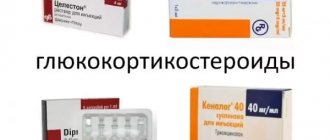- General information
- Types of Pulmonary Hypertension
- Symptoms
- Diagnostics
- Treatment of pulmonary hypertension
- Oxygen therapy
- Drug therapy
- Surgery
Pulmonary hypertension is a life-threatening condition caused by narrowing of the pulmonary arteries.
In medical practice, it exists as an independent disease, but more often it is a consequence of severe heart or lung diseases. Although the disease pulmonary hypertension (PH) was described more than 100 years ago, there is still no comprehensive explanation of the pathogenesis. The process of identifying the disease takes a fairly long period of time: on average, two years pass from the first consultation to diagnosis. Moreover, one of the forms - idiopathic - leads to death within 3 years if no measures are taken. Therefore, immediate contact with a specialist is required when the first symptoms occur. A thorough examination will allow you to prescribe a course of treatment, which may include diuretics.
Functional classification of pulmonary hypertension
| Class I | There is no restriction on physical activity. Ordinary physical activity does not cause shortness of breath, weakness, chest pain, or dizziness |
| Class II | some decrease in physical activity. Ordinary physical activity is accompanied by shortness of breath, weakness, chest pain, dizziness |
| Class III | severe limitation of physical activity. Little physical activity causes shortness of breath, weakness, chest pain, dizziness |
| Class IV | inability to perform any physical activity without the above clinical symptoms. Shortness of breath or weakness may be present even at rest, discomfort increases with minimal exertion |
Interview and examination of the patient
It is necessary to find out whether the patient has had episodes of deep vein thrombosis, sudden swelling of the legs, or thrombophlebitis. Many patients have a family history of sudden death, cardiovascular disease, and an increased tendency to thrombus formation.
Objective evidence of a history of pulmonary embolism (PE) is the coincidence in time of the clinical presentation of thrombosis of the veins of the lower extremities and the appearance of shortness of breath. In the coming months after PE, a period can be identified in patients when the condition remains stable and asymptomatic. This is due to the fact that the right ventricle copes with the load and allows maintaining good exercise tolerance until progressive pulmonary vascular remodeling develops. Almost the only reliable evidence of previous PE can be data from perfusion scintigraphy or computed tomography of the lungs performed during an acute episode of PE.
During a general examination of patients with CTEPH, blueness (cyanosis) may be detected. With the development of right ventricular heart failure, swollen neck veins, enlarged liver, peripheral edema, and abdominal dropsy are noted.
Disease prognosis
The prognosis of pulmonary hypertension is unfavorable. It will not be possible to achieve a complete recovery. If the patient receives treatment, then heart failure leading to death will still occur, but the patient will still be able to prolong the life.
- If the cause of pulmonary hypertension is systemic scleroderma, then the prognosis is extremely unfavorable. During the disease, normal organ tissue degenerates into connective tissue. As a result, a person dies within the first year.
- With idiopathic pulmonary hypertension, the prognosis is slightly improved. Such patients can live on average three years after diagnosis.
- If a heart defect leads to pulmonary hypertension, the patient is referred for surgery. The five-year survival rate of such patients is 40-44%.
- If, against the background of pulmonary hypertension, heart failure rapidly increases with damage to the right ventricle of the heart, then death will occur within 2 years after the manifestation of the disease.
- If pulmonary hypertension has an uncomplicated course and can be corrected with medication, then about 67% of patients cross the 5-year mark.
Non-invasive diagnostics
Electrocardiography (ECG) reveals signs of hypertrophy and overload of the right ventricle, dilatation and hypertrophy of the right atrium (p-pulmonale), deviation of the electrical axis of the heart to the right.
Chest X-ray allows you to clarify the etiology of PH: identify interstitial lung diseases, acquired and congenital heart defects, and also judge the severity of PH. The main radiological signs of PH are bulging of the trunk and left branch of the pulmonary artery, which form the second arch in the direct projection along the left contour of the heart, expansion of the roots of the lungs, and enlargement of the right parts of the heart. In patients with post-embolic pulmonary hypertension, signs can be identified that indicate the presence of blood clots in the large branches of the pulmonary artery (PA) - dilation of the trunk and main branches of the PA, a symptom of deformation and shortening of the root. A specific symptom is the depletion of the pulmonary pattern in the area of impaired blood supply.
Echocardiography (EchoCG) - Ultrasound of the heart is considered the most valuable non-invasive method for diagnosing PH, as it not only allows one to assess the level of pressure in the pulmonary artery, but also provides important information about the cause and complications of PH. Using this method, it is possible to exclude damage to the mitral and aortic valves, myocardial disease, congenital heart defects with blood shunting, leading to the development of PH. Unfortunately, the method does not allow differentiating post-embolic pulmonary hypertension from other forms of precapillary PH. The exception is rare cases of the presence of massive thrombi in the trunk and main branches of the pulmonary artery in the immediate vicinity of the bifurcation.
Pathogenesis
Primary PH is characterized by smooth muscle hypertrophy, variable vasoconstriction, and vessel wall remodeling. Vasoconstriction is caused by an increase in the activity of thromboxane and endothelin 1, as well as a decrease in the activity of nitric oxide and prostacyclin. Increased pulmonary vascular pressure is caused by vascular obstruction. It affects endothelial damage.
As a result, coagulation on the intimal surface is activated, which can aggravate arterial hypertension. This is also facilitated by thrombotic coagulopathy, which is a consequence of an increase in the content of plasmogen activator inhibitor type 1 and fibrinopeptide A and a decrease in the activity of tissue plasmogen activator. Focal coagulation on the surface of the endothelium must be distinguished from chronic thromboembolic pulmonary arterial hypertension, which is provoked by organized pulmonary thromboembolism.
As a result, in most patients, primary pulmonary hypertension becomes a provoking factor of right ventricular hypertrophy with dilatation and right ventricular failure.
Establishment of clinical class and verification of diagnosis
Pulmonary function tests can identify obstructive or restrictive changes for the purpose of differential diagnosis of PH and clarify the severity of lung damage. Patients are characterized by a decrease in the diffusion capacity of the lungs for carbon monoxide (40-80% of normal), a slight or moderate decrease in lung volumes, a normal or slightly decreased PaO2, and usually a decreased PaCO2 due to alveolar hyperventilation.
Ventilation-perfusion lung scintigraphy is a screening method to exclude chronic thromboembolism as a cause of pulmonary hypertension. In patients after thromboembolism, perfusion defects are found in the lobar and segmental zones in the absence of ventilation disturbances. Perfusion scintigraphy has historically become one of the first methods for detecting perfusion defects in the pulmonary parenchyma in pulmonary embolism. The images obtained in acute PE and CTEPH differ significantly. Perfusion defects in acute PE are more clearly defined and contrast sharply with normally functioning tissue. In CTEPH, perfusion defects are not clearly defined and often do not correspond to the blood supply area of the large pulmonary artery.
Computed tomography and CT angiopulmonography
The CT picture of chronic thromboembolism can be represented by occlusions and stenoses of the pulmonary arteries, eccentric filling defects due to the presence of blood clots, including recanalized ones. CT angiopulmonography is performed on spiral computed tomographs during the phase of passage of the contrast agent through the pulmonary arterial bed. Among the methodological features, it should be noted that the study must be carried out using at least an 8-spiral tomograph, with a minimum step (no more than 3 mm) and a slice thickness (no more than 1 mm). A thorough scan should cover both lungs completely, from the apices to the phrenic sinuses. Contrast enhancement of the right chambers of the heart and pulmonary arteries should match or exceed the degree of contrast enhancement of the left chambers of the heart and aorta. The second, arterial phase of scanning is recommended for all patients over 40 years of age, especially if there is evidence of arterial thrombosis and coronary artery disease in the anamnesis. Modern software allows you to reconstruct images of the pulmonary arteries in any plane, construct maximum intensity projections and three-dimensional images. In most cases, to clarify the nature of the lesion, it is enough to analyze cross sections using an image viewer, which makes it possible to determine the presence of changes not only in the lobar and segmental branches, but also in a number of subsegmental arteries. Pathological changes, in addition to the presence of “old” thrombotic material, may include local thickening of the vessel wall, narrowing at the mouth of the vessels and along them, occlusions, intravascular structures in the form of membranes and bridges. If changes are detected in several branches of the pulmonary arteries, we can conclude that there is a high probability of thromboembolic nature of PH. It is important to note that the resolution of modern CT scanners is limited and does not allow the determination of very thin membranous and stringy structures in the lumen of the LA, especially if the size of the object does not exceed 2-3 mm. In some cases, calcification of the “old” thrombotic material develops, and CT can be invaluable in determining the location of the calcification. CT makes it possible to detect not only stenotic changes in the vessels of the lungs, but also disturbances in the perfusion of lung tissue by the nature of the contrast of the parenchyma. In some cases, parenchymal enhancement is so uneven that mosaic enhancement is detected on scans. A clearly defined mosaic pattern of segments usually indicates a good prognosis for surgical treatment. Contrasting exclusively in the root zones is not a true mosaic and is often observed in microvascular forms of PH. By providing detailed images of the lung parenchyma, CT allows the diagnosis of other lung diseases. In addition to the state of the arterial bed, CT can provide comprehensive information about all intrathoracic structures, which is important for confirming the diagnosis and developing a surgical treatment plan. Before performing the operation, the condition of the pulmonary parenchyma, bronchial tree, and pulmonary veins should be taken into account.
Angiographic diagnostics
The main objectives of angiographic diagnosis are to determine the severity of pulmonary hypertension, clarify the nature of the lesion in the pulmonary bed through angiopulmonography, and identify/exclude coronary disease. Carrying out catheterization in isolation without high-quality angiopulmonography in a patient with clear signs of CTEPH is inappropriate. This study should provide clear information to doctors to resolve the issue of the patient’s operability and the severity of his condition. Hemodynamic criteria for post-embolic pulmonary hypertension, identified during catheterization of the right heart, are: mean pulmonary artery pressure (PAP) above 25 mm Hg. Art., pulmonary artery wedge pressure (PAWP) ≤ 15 mm Hg. Art., PVR > 2 units. according to Wood (160 dyn. sec cm-5) in the presence of multiple stenotic and/or occlusive lesions of the branches of the pulmonary artery of various calibers.
Treatment
In the initial stages, treatment of pulmonary hypertension involves non-drug therapy:
- reducing the amount of table salt consumed in food and reducing the volume of liquid drunk to 1–1.5 liters per day;
- oxygen therapy - is carried out to saturate the blood with oxygen and cleanse it from the accumulation of acids, restore the normal functioning of all parts of the nervous system, break the chain in the pathology mechanism;
- dosing physical activity in such a way that it does not provoke fainting, dizziness, or chest pain;
- excluding stay at high altitudes (more than 1000 meters).
The prognosis in the case of initial signs of hypertension can be favorable if the patient follows all the doctor’s recommendations and regularly undergoes examinations to monitor the state of health over time, and is treated with available folk remedies.
Drug therapy
Treatment of pulmonary hypertension with medications is carried out using the following groups of drugs:
- Calcium antagonists - change the frequency of heart contractions, eliminate spasms in the pulmonary circulation, relax the muscles of the bronchi and increase the resistance of the heart muscle to lack of oxygen.
- Diuretics - with the help of this group of drugs it is possible to remove excess fluid from the body and reduce blood pressure (carried out by monitoring blood viscosity and electrolyte composition).
- ACE inhibitors - designed to reduce blood pressure, dilate capillaries and reduce the load on the heart muscle.
- Anticoagulants of direct and indirect action. The first group prevents the formation of fibrin in the blood and prevents the formation of clots in the capillaries. The second group reduces blood clotting rates.
- Endothelin receptor antagonists are drugs that have a powerful vasodilator effect.
- Bronchodilators are drugs to improve lung ventilation and bronchial patency. Prescribed for conditions accompanied by bronchospasm, for example, bronchial asthma.
- Prostaglandins are drugs that dilate blood vessels, prevent the adhesion of red blood cells and platelets in the blood, slow down the formation of connective tissue, and reduce damage to endothelial cells.
According to indications, antibiotics are also prescribed (if a pulmonary infection is diagnosed), antiplatelet agents (acetylsalicylic acid), and nitrates. Courses of inhaled nitric oxide are carried out for several hours a day for 2-3 weeks in a row to dilate blood vessels. Other drugs for the treatment of pulmonary hypertension that may be required are prescribed by specialists when assessing clinical symptoms.
Surgical methods
Surgical intervention is recommended for patients who do not show positive changes in their health status as a result of conservative treatment. Surgical treatment methods include:
- thromboendarterectomy – removal of blood clots from the vascular cavity;
- atrial septostomy - an artificial opening is created between the two atria (right and left), with the help of which it is possible to normalize the pressure in the right atrium;
- lung transplantation or a combination of heart and lungs - is used in the serious condition of the patient, when he has developed signs of heart valve insufficiency, excessive hypertrophy of the heart muscle, and high pulmonary hypertension.
Lung transplantation is performed only in extreme cases according to strict indications
It is necessary to carry out treatment with medication or surgery, since pulmonary hypertension threatens with life-threatening complications - thrombosis of the pulmonary arteries, hypertensive crises in the pulmonary artery system, heart rhythm disturbances and the development of severe failure. In the absence of proper therapy, the patient faces death, especially in advanced cases of the disease.
To reduce the risk of developing hypertensive syndrome, it is necessary to give up bad habits, eliminate psycho-emotional stress, and treat chronic diseases of the heart, blood vessels and lungs. Patients diagnosed with the initial stage of the disease are advised to regularly engage in light-intensity sports (walking, swimming, doing yoga, if these activities are tolerated well), and eliminate signs of concomitant diseases. Also, with a diagnosis of pulmonary hypertension, a person must be registered with a cardiologist and pulmonologist to prevent exacerbations and timely initiation of treatment.










